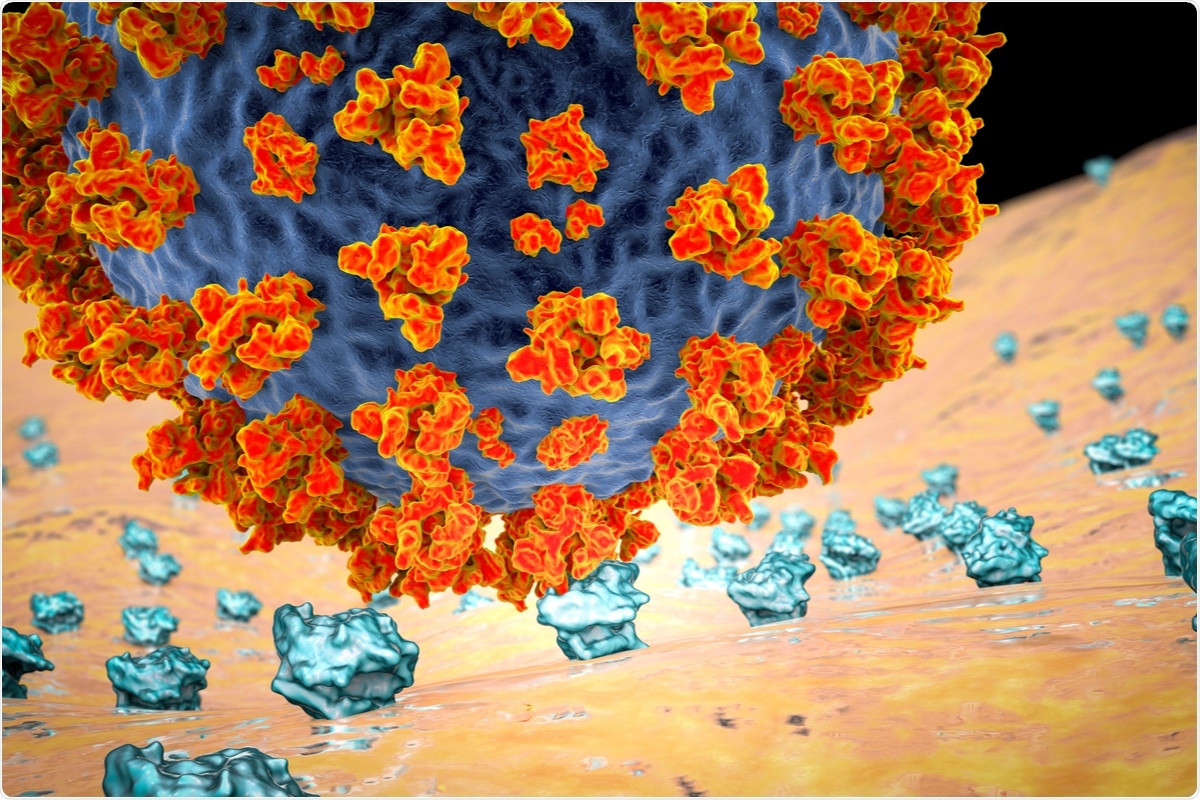Five variants of interest (VOIs) and four variants of concern (VOCs) of the novel severe acute respiratory syndrome coronavirus 2 (SARS-CoV-2) virus have been recognized by the World Health Organization (WHO) so far. The Delta variant is currently the most prevalent. These variants have higher transmissibility than the original virus due to mutations in the receptor-binding domain (RBD) of the spike (S) proteins of SARS-CoV-2 in response to alteration of immune profiles post-immunization. These mutant variants are spreading rapidly in countries with high vaccination rates, and the world is facing the risk of a new wave of coronavirus disease 2019 (COVID-19) infection.
 Study: SARS-CoV-2 Variants, RBD Mutations, Binding Affinity, and Antibody Escape. Image Credit: Kateryna Kon/ Shutterstock
Study: SARS-CoV-2 Variants, RBD Mutations, Binding Affinity, and Antibody Escape. Image Credit: Kateryna Kon/ Shutterstock
In a paper published in the International Journal of Molecular Sciences, researchers explained their analysis of the mechanisms that trigger the docking of SARS-CoV-2 variants to angiotensin-converting enzyme 2 (ACE2) and the antibodies, referred to as protein-protein docking. They used the protein data bank (PDB) database to source the 3D structure data of ACE2, antibodies, RBD, and all of their complexes and the PyMOL software to display the hydrophobic surface areas of these proteins and draw their 3D structures.
Using integration, they calculated the size of the hydrophobic and hydrophilic contact areas in these complex structures and the binding affinity of RBD and ACE2/antibodies using entropy–enthalpy compensation. Subsequently, Gibbs free energy change was calculated.
The study
Researchers made two significant discoveries about SARS-CoV-2 RBDs. First, that the existing RBD mutations have already created all possible detrimental mutations. Hence SARS-CoV-2 transmissibility has increased to its highest possible level already. Second, if a mutation occurs at the 498th amino-acid position of the RBD, it can potentially enhance its binding affinity.
The protein-protein docking induces Gibbs free energy change which can be considered the binding affinity. In the SARS-CoV-2-RBD–ACE2 complex, it was observed that the Gibbs free energy change caused by the R–E ADD interaction is negligible. Thus, the L452R mutation increases the binding affinity between the RBD and the ACE2. Researchers used this information to calculate the mutation-induced Gibbs free energy change difference for all the VOCs in the binding with ACE2 compared to the original SARS-CoV-2. The calculated Gibbs free energy change of the SARS-CoV-2-RBD–ACE2 complex was bigger than that of the SARS-CoV-RBD–ACE2 complex, explaining why SARS-CoV-2 has higher transmissibility compared to SARS-CoV.
The L452R mutation in SARS-CoV-2 reduces the binding affinity of many antibodies, thus facilitating breakthrough infections by SARS-CoV-2 variants. Researchers were also able to establish that the mutations which reverse the hydrophilic/hydrophobic performance of the RBD residues can result in breakthrough infections by SARS-CoV-2 variants due to the changes in geometric complementarity in the entropy–enthalpy compensations between the virus and antibodies at the binding sites.
Since the beginning of the pandemic, the RBD of the SARS-CoV-2 S protein has undergone several missense mutations giving rise to several VOCs such as the K417N, G446V, and N501S, to name a few. Most of these missense mutations occur at the RBD–ACE2 interface, which complies with the entropy–enthalpy compensation rule and is the driving force behind the spontaneous protein-protein docking.
The researchers proposed a new method to calculate the binding energies of complex proteins besides experimentally determining the structures of RBD–antibody complexes and the RBD– ACE2 complexes. They also devised a new method to measure the total area at the interface of these protein-protein complexes. Results showed that Gibbs free energy change decreases only during the Ho-Ho interaction and increases during the ADD, Ho-Hi, and RDD interactions, which helps calculate the docking-induced Gibbs free energy change.
Conclusion
To summarize, the findings of this study show that the faster entry kinetics of the SARS-CoV-2 variants inside the host may not necessarily translate to the faster spread of the virus. They also reiterate the earlier findings on the Delta variant and suggest that it has higher transmissibility and spreads rapidly and easily even in countries with the best vaccination rates.
All currently approved COVID-19 vaccines were designed based on the SARS-CoV-2 strain originally identified in China in late 2019. The initial SARS-CoV-2 strain is now disappearing in countries with the highest vaccination rates and SARS-CoV-2 variants have almost replaced it. These deadlier strains are spreading at an alarmingly high rate in these countries, which calls for persistent efforts to develop more effective preventive measures, be it vaccines or therapeutic antibodies, against SARS-COV-2.